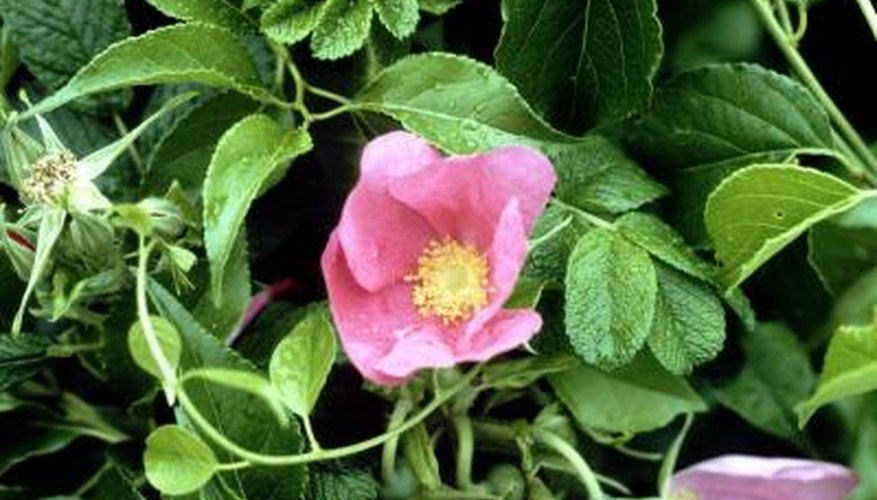Rosa rugosa is a small, flowering shrub. Homeowners like Rosa rugosa because it produces big, roselike blossoms without all the fuss of a real rose bush. But, over time, homeowners often find that the rosa rugosa is a little too hardy. Without regular pruning, its thorny branches grow rapidly to form dense, unruly thickets. But the thorny growth is all bark and no bite. Although it does have a tendency to spread, you can get rid of a Rosa rugosa with a season or so of mechanical or chemical control methods.
Cut back the rosa rugosa's foliage to or near ground level with lopping shears. Wear long clothing and close-toed shoes to protect yourself from thorns.
- Rosa rugosa is a small, flowering shrub.
- Cut back the rosa rugosa's foliage to or near ground level with lopping shears.
Dig up the rosa rugosa's roots. Start digging at the edge of a circle that is roughly twice the diameter of the rosa rugosa's former foliage. Work in toward the bush as you dig. Remove every root piece that you spot and place it in a plastic bag.
- Dig up the rosa rugosa's roots.
- Start digging at the edge of a circle that is roughly twice the diameter of the rosa rugosa's former foliage.
Dig through the area again in an area slightly wider and deeper than the first hole. Check for and remove any root pieces that you may have left behind. Even small Rosa rugosa root pieces can grow into whole new plants. If you leave many pieces behind, you can end up with a worse infestation than you started with.
Monitor the area for regrowth. Seed in the soil and overlooked root pieces can produce new growth over subsequent seasons. Dig up any new foliage as soon as you spot it, or spray it with a glyphosate herbicide.
Cut back the rosa rugosa's foliage to within 6 inches of the ground with lopping shears. Wear long clothing and close-toed shoes to protect yourself from thorns.
Cut each remaining stalk back to within 3 inches of the ground. Immediately after you make the pruning cut, paint the cut surface with a small paintbrush dipped in a glyphosate herbicide.
- Monitor the area for regrowth.
- Immediately after you make the pruning cut, paint the cut surface with a small paintbrush dipped in a glyphosate herbicide.
Monitor the area for regrowth. Dig up or paint any new foliage with glyphosate as soon as you spot it.
TIP
Repeatedly cutting back a Rosa rugosa eventually kills the plant's roots. However, you must be vigilant and keep the foliage close to ground level for several seasons. Remove the rosa rugosa foliage from the area. Do not compost any plant material that has round orange rose hips on it. The seed may continue to mature and survive the heat of the compost pile.
